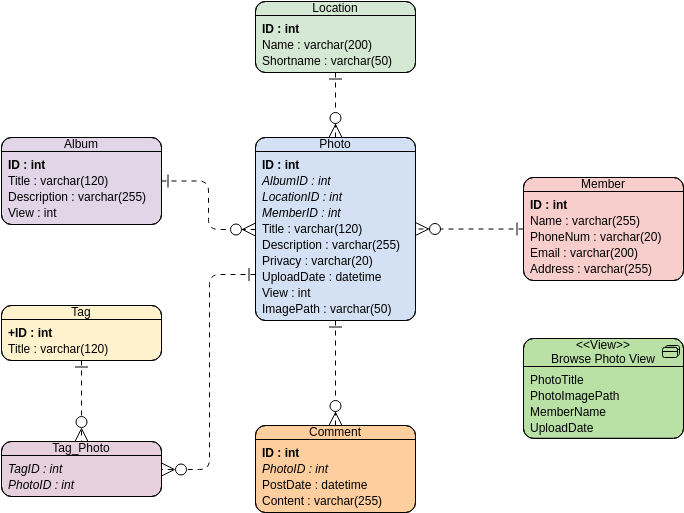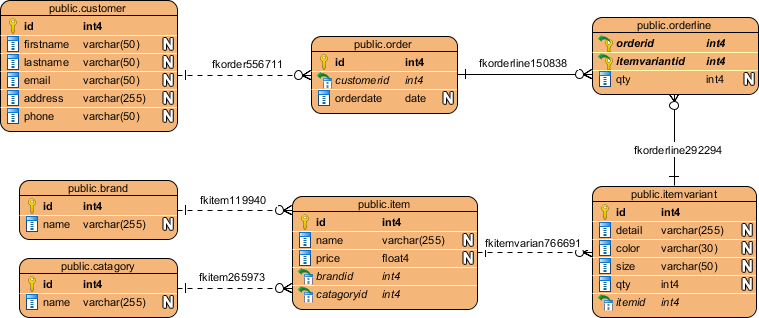
Sample data enables your team to have a basic idea of the kind of data that will be stored. Now our ERD is ready and we can start defining the sample data for our database. Right-click on OrderLine and select New Column from popup menu, then enter qty : int.A link entity is created between Order and ItemVariant.In Resource Catalog, select Many-to-Many Relationship -> Entity. Press on the Resource Catalog icon, drag to ItemVariant and release your button. Move the mouse pointer over the Order entity. As each Order can have multiple ItemVariant, and each ItemVariant can be involved in multiple Order, therefore it is a many-to-many relationship. We should relate the Order with ItemVariant instead of Item since ItemVariant is the entity storing the actual item. Finally, we have to store the items purchased on each order.Repeat the steps above to create the ERD as below.Right-click on ItemVariant entity and select New Column from popup menu, then enter the following columns.Select One-to-Many Relationship -> Entity in Resource Catalog. Press on the Resource Catalog icon at the top right of shape and drag it out. Move the mouse pointer over the Item entity.

Let's create an ItemVariant entity from Item entity with one-to-many-relationship. a bike jersey will have different sizes and colors. An Item may have different styles, i.e.Press Esc to stop adding further columns.Now enter name : varchar(255) and price : float4 for the next two columns.

#Visual paradigm erd tools password
#Visual paradigm erd tools download
You may click here to download the Amazon Redshift JDBC driver.


In this tutorial, we will interact with a database named Tutorial01. In order to walk through this tutorial, please setup a new database in Redshift first.


 0 kommentar(er)
0 kommentar(er)
